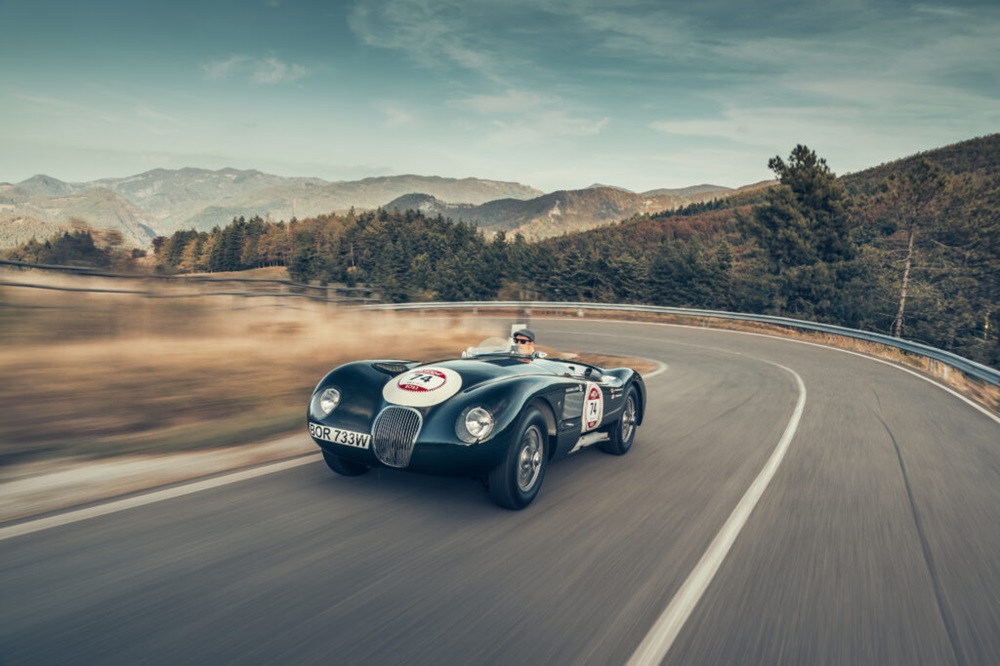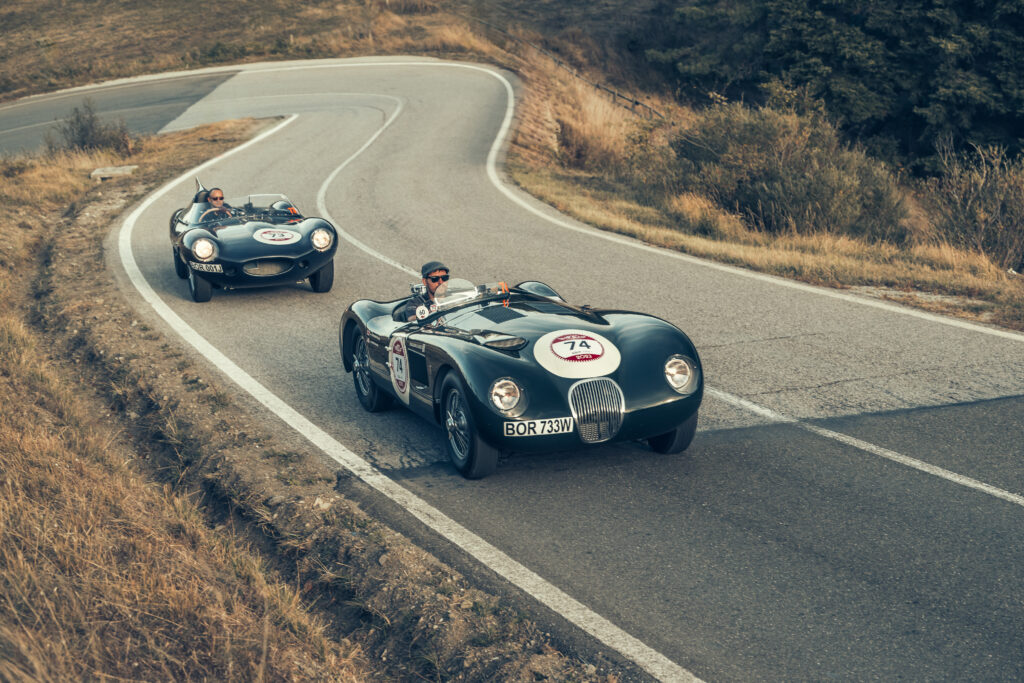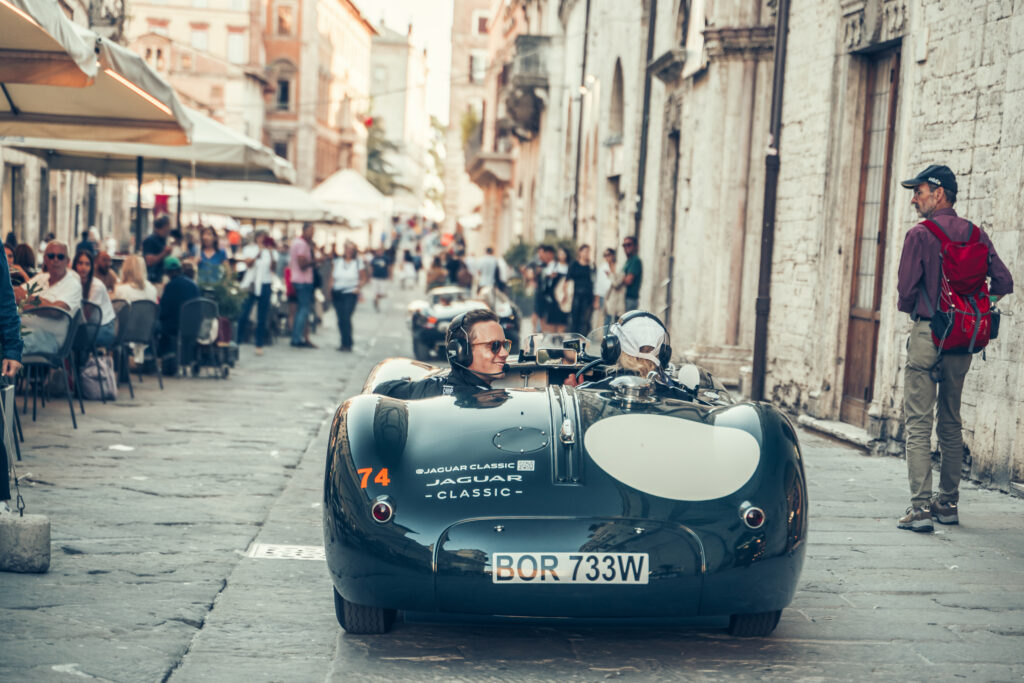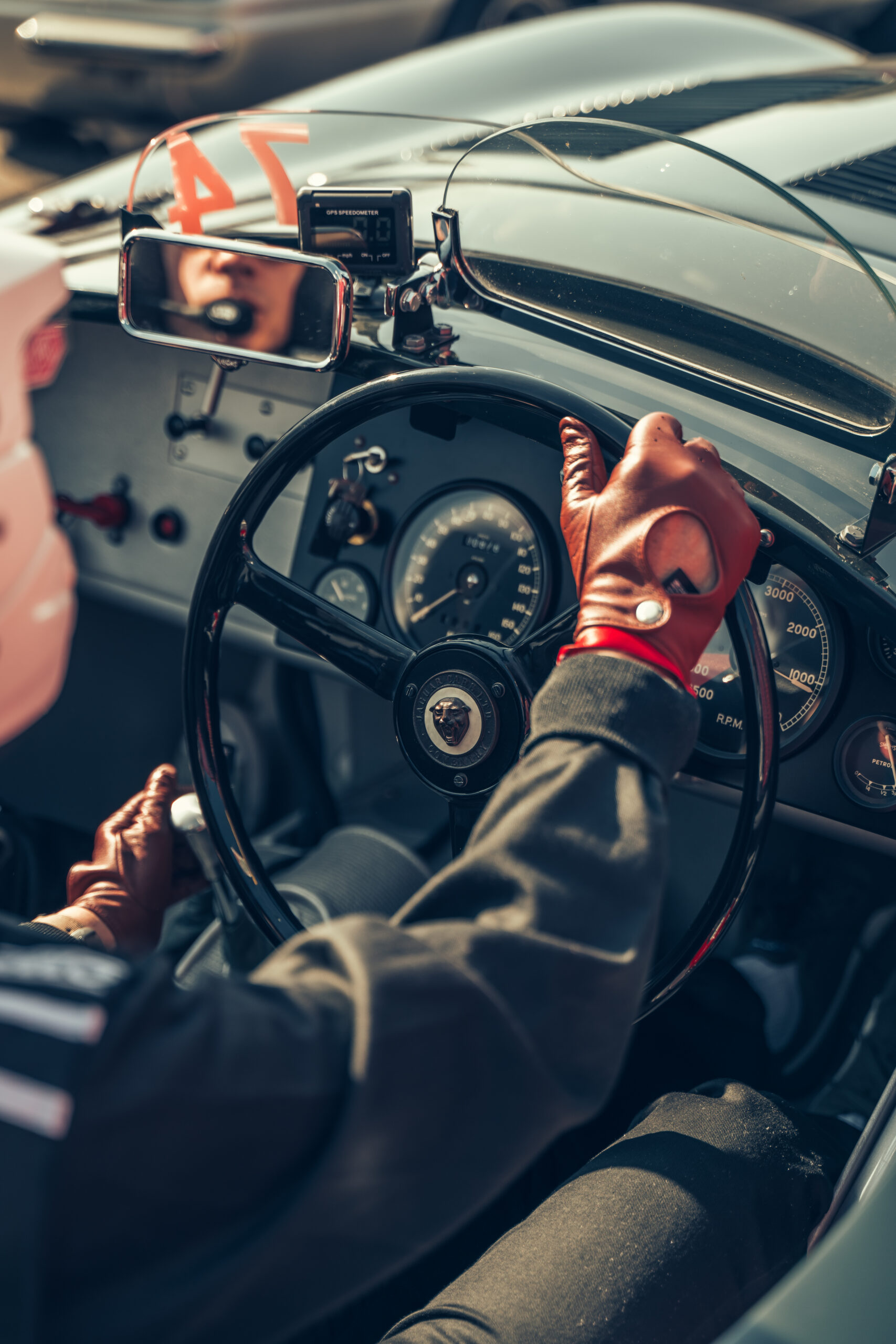‘Twas Hamlet who inquired most eloquently about being or not being, but car collectors and enthusiasts alike have their own internal debate, one that has been going on for decades. What is real? What isn’t? Should copies (aka fakes, replicas, reproductions, clones, tributes, etc.) even exist? Is a chassis tag enough to qualify a significant car as genuine? What if it’s a rebuilt wreck? What if it’s a copy so exact and accurate that no one can tell it isn’t an in-period factory original?

I have long had a firm opinion on this whole real vs. replica issue: if it’s not the real deal, then why bother? However, I recently got some seat time in a C-Type Continuation from Jaguar Classic, and now I’m having an existential crisis.

Continuation cars are similar to replicas, albeit with a few key differences. Built by the same companies who made the originals and to identical or near-identical specifications, continuation cars are in a material sense the real deal, just assembled a few decades late. Carmakers like Aston Martin and Bentley have seen values of some of their greatest classics soar, and they understandably seized on the opportunity to meet market demand with their own fresh products. Jaguar Classic got into the continuation game in 2016, recreating the Lightweight E-Type. It quickly moved to the XKSS road car and then the D-Type race car that took Le Mans by storm in the mid-1950s.

The latest to join this prowl of new-old Jags is the C-Type Continuation, one of which was offered to me for the Modena Cento Ore, a 900-kilometer gentleman/gentlewoman racers’ luxury road and track rally through some of the more recognizable bits of northern Italy. Built in 2021, this one was crafted to 1953 specifications. That was the year the C-Type took first, second, fourth, and ninth at Le Mans thanks to a banger of an engine, smooth aerodynamics, and novel disc brakes. Technically this car is still quite new, but driving it through Tuscany easily passed for the best kind of time travel.
The raucous Weber-fed XK engine and non-synchro four-speed gearbox presented the same mechanical engagement felt by Tony Rolt and Duncan Hamilton when they whizzed down the Mulsanne Straight 70 years ago. The hand-built 3.4-liter straight six—identical to those that left the factory in ’53—never needed high revs thanks to its abundant torque, but it sure felt eager, like it wanted to you to give it the beans and flirt with the redline. The expansive hood out front, spartan interior with analog gauges, and sounds and smells blasting past completed the experience. The only thing that didn’t feel “classic” about this English race car was the lack of stress over whether it would start. At no point did I say to myself “shame it’s not real,” and I doubt anybody watching it roar through the Umbrian countryside did, either.
Which brings me back to the real vs. not-real dilemma. Well-done C-type replicas from companies like Lynx or Proteus have offered a much more affordable alternative to the originals for decades. The delicious C-Type Continuation from Jaguar Classic, on the other hand, costs about £1.5M ($1.82M). It’s important to remember, however, that Jaguar only screwed together 53 original C-Types from 1951-53. The last one to sell at auction brought $5.285M and most of the ones that still exist live on quietly in large collections. Real C-Types, especially ones with serious race history, are so valuable that it’s hard to justify taking them out and driving them as originally intended. As a result, an exact copy or a very close one—a car that gives the same experience without the risk—starts to make a lot more sense.
This dilemma is hardly unique to Jaguars, nor is it new. Chuck Beck made his first Porsche 550 Spyder copies over 40 years ago. Various contemporary builders have paid tribute to the late 1960s Yenko Camaro, and folks from Pur Sang in Argentina build a Bugatti Type 35 replica, which, but for six minor details that are different from the 1920 originals, might fool even the keenest of eyes. There are likely more replica Porsche 356 Speedsters on the road than real ones, and certainly more Shelby Cobra replicas than the real thing.
“If we relied on only original owners, we would have three members,” says Norman Jesch, president of the Southern California Cobra Club. “And the guys who really care, those guys with the early cars who used to take issue? I beg your pardon, but they’ve passed away.”

“Any potential controversy comes from owners who for various reasons consider their cars original or try to pass them off as such. But now, with modern technology, there isn’t too much of that. It’s easy enough to confirm with a CSX number if someone’s Cobra is real,” according to Jesch.
In speaking with Jesch and others about this topic, I thought I’d find plenty of people who are dead set against non-authentic cars. In fact, it was nearly impossible, as replicas and continuations appear to have found their place in the hobby.
“Even the Bugatti guys who aren’t in love with Pur Sang replicas don’t have much of an argument. No one’s going to put one of them up for auction, call it real, and devalue the originals,” says Logan Calkins, Director of Events at Hagerty.
Replicas, reproductions, kits, and tributes (Hagerty will insure most of them) keep the original marques, some of which are long gone, out there and relevant. Continuations only further tie in the heritage. They’re touchpoints for young enthusiasts just getting into classic cars and for weekend racers channeling their inner Stirling Moss.
Would I prefer the real thing? Who wouldn’t? But if these cars stir the same emotions on the road and help keep the love of classic cars alive, then where’s the rub? Taking in all the sights, sounds, and smells of the 1950s via a car with a twenty-first century build date, I’m reminded that the true joy is in what a car delivers more so than in what it is.
Report by Lyn Woodward
find more news here…












